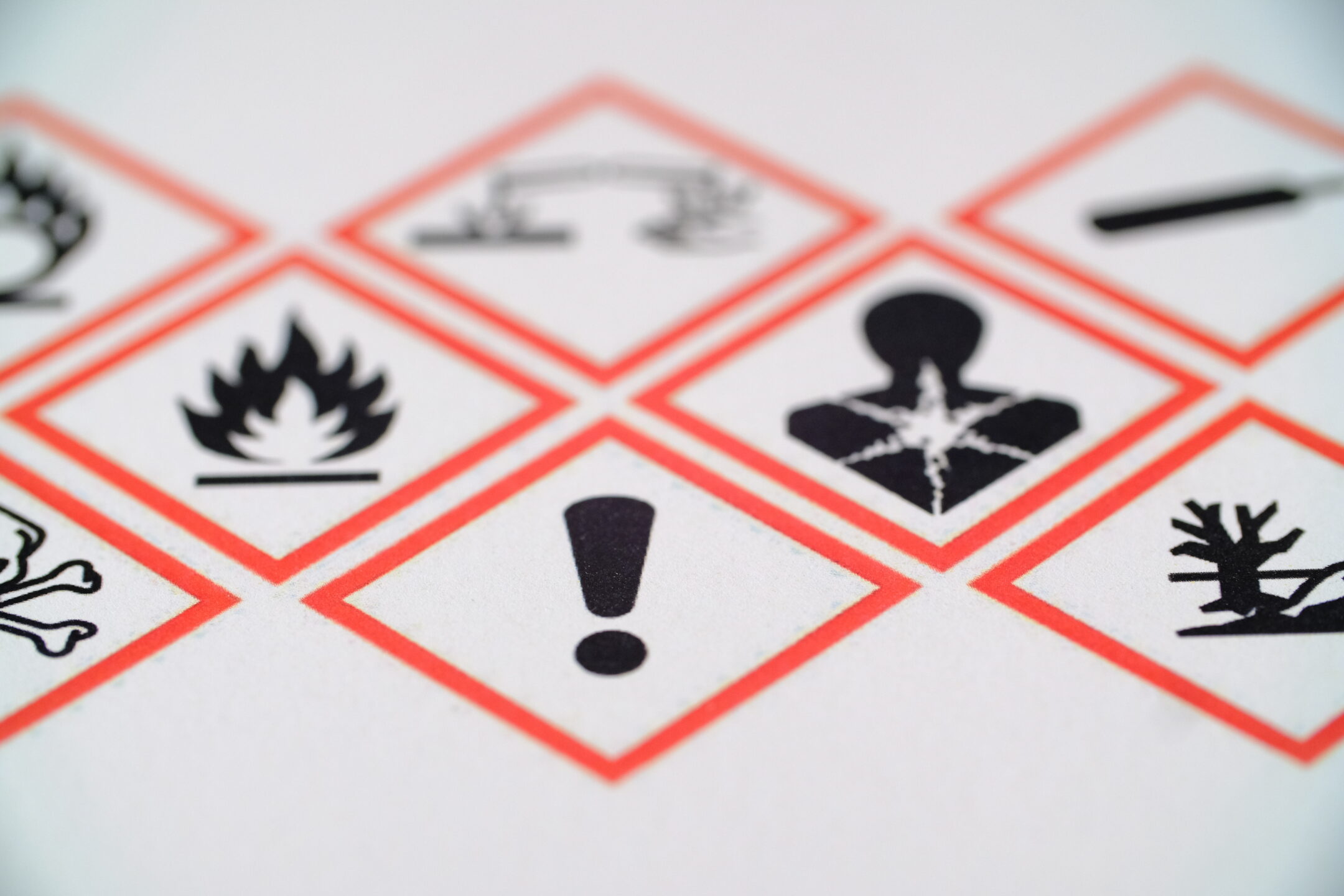
Dangerous goods may be pure chemicals, mixtures of substances, manufactured products or articles that pose a risk if not handled correctly during transportation. The transport of dangerous goods is regulated in order to prevent, as far as possible, accidents and damage to People, Property and the Environment.
Each mode of transport, (air, sea, road, rail and inland waterway) has its own regulations. The United Nations (UN) sub-committees for each mode have identified which articles and substances they are willing to transport safely and security. Helping them to mitigate their level or risk.
How do I recognise Dangerous Goods?
Many products which we encounter on a daily basis can be hazardous to our health if we come into contact with them too often or for too long. The UN put together the Global Harmonised Symbols to help us identify articles and substances that may be considered harmful or dangerous for transport.
These symbols only relate to the hazards to consumers when using a product and does not automatically mean that it is dangerous in transport.
However, it acts as a red flag to get us thinking about when the article or substance may react during the normal conditions of transport.
The normal conditions of transport are:















Articles and substances are segregated into one of nine hazard categories.
Each article and substance is given a Proper Shipping Name and a UN Number so that it can be recognised globally as a hazard.
To confirm if your article or substance may be dangerous, we have to refer to the manufacturer’s safety data sheet. Section 14 Transportation. If your safety data sheet displays a UN number – you must follow the regulations for transporting the article or substance.
If you are not trained on dangerous goods, talk to a dangerous goods safety adviser.
What happens if I ship those goods without having the hazard declared?
If articles or substances are shipped without having the hazard declared this is called Undeclared Dangerous Goods. This opens your organisation up to penalties and for continued shipments a journey through the court system for larger penalties and potential custodial sentences.
Current fines are unlimited in the UK but if there has been an incident involving your goods, you may have to pay for the repair of the property (truck, aircraft or cargo vessel), the environmental clean up, cover the cost of the damage to others.
Factoring in the long term damage to your business reputation, the cost can run into millions.
